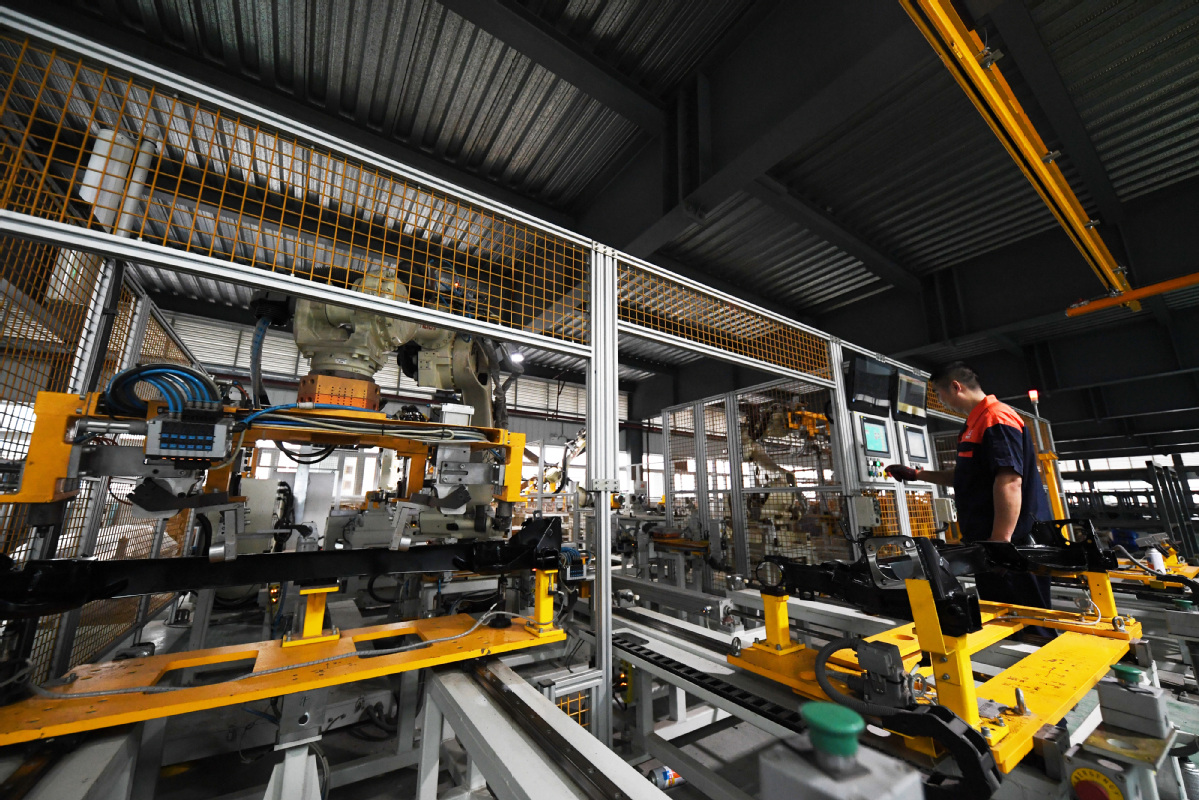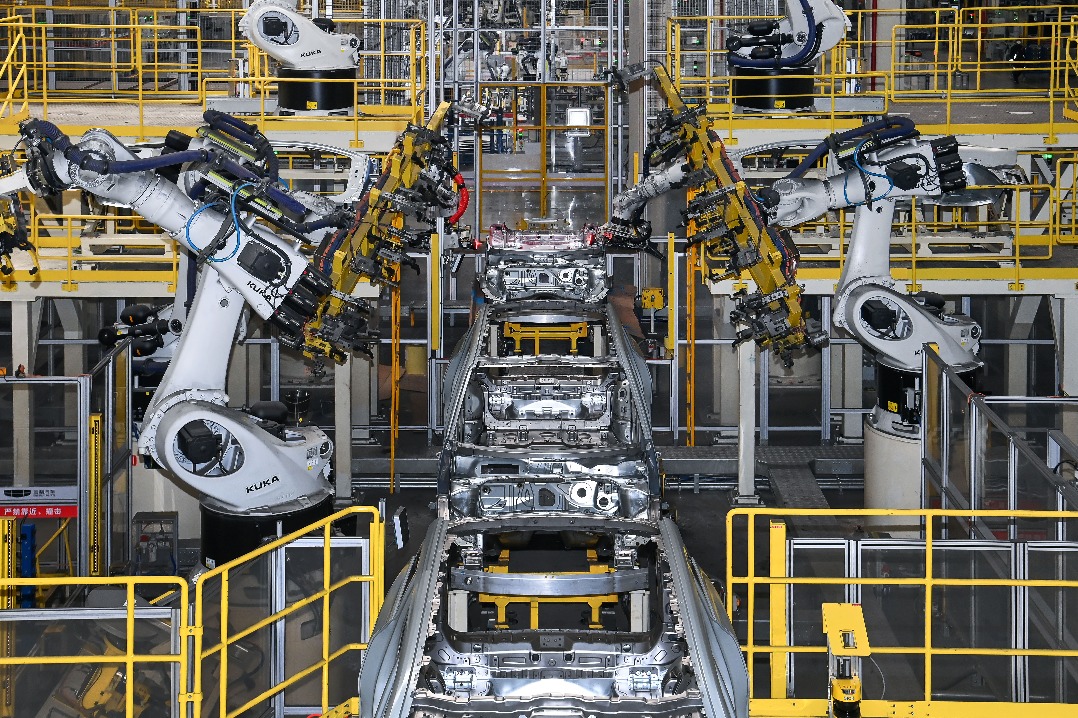Foreign trade firms shifting to domestic market


Although the COVID-19 outbreak has brought challenges for Chinese companies' participation in the global value chain, it has also become an opportunity for various industries to reshuffle, and for related companies to achieve breakthroughs in some key areas.
China is already deeply involved in many levels of the global value chain, which allows the country to share the dividends of globalization. The country used to rely on imports of key parts and components in mechanical and electronic equipment and aerospace due to domestic shortcomings in such key technologies.
The majority of Chinese companies were previously engaged in what could be called "simple labor" compared to a less engaged "complex labor" process, which includes product development, marketing channels and brand creation. As of today, many companies are still at the bottom of the global value chain.
In the face of shrinking external demand, firms engaged in foreign trade will turn to the domestic market and will inevitably engage in "complex labor". Although they will face new costs of learning about the transforming marketplace, the digitization of the domestic consumer market has greatly reduced pressure on firms, especially self-built brands, and simplified sales channel thresholds and end-to-end online paths make the shift to the domestic market easier still.
With more companies vying for the hearts, minds and wallets of Chinese consumers, the latter will ultimately enjoy lower prices. When these Chinese companies are equipped with comprehensive capabilities in planning, research and development, production, marketing and personalized services, they will bring more value to the "Made in China" label.
Enterprises engaged in foreign trade have traditionally been original equipment manufacturers, or OEMs. Their products range from textiles and garments to various types of light industrial products, as well as mechanical equipment, electronics and digital products. All of them are unknown Chinese enterprises that carry out production for world-renowned companies.
Actually, the quality of products produced by these Chinese enterprises is excellent, and fully meets the requirements of global big names. But because they do not have their own brands, they can only sell overseas with the help of those brands.
In fact, building up production capacity requires good infrastructure, sound employee training and education, as well as support systems in other areas. China has already built up a strong production capacity. If we can further develop the two ends of the value chain, we will be able to build our own brands based on high-quality products and create greater value with the same resources.
Due to years of OEM activities, Chinese foreign trade enterprises have lost pricing power in the global market. To create independent brands is conducive to increasing prices and improving profitability for manufacturers. Traditional foreign trade products are priced at a relatively fixed rate, and profit margins for Chinese OEMs are very limited.
In the face of the COVID-19 pandemic, Chinese export enterprises can continue to improve their R&D innovation and channel development capabilities. As pandemic suppresses external demand, it is a good time for China to cultivate a few well-known brands and promote "Made in China" to the global market.
With the rapid development of the global value chain, small and medium-sized enterprises have obtained more opportunities to grow. On the one hand, SMEs can offer intermediate products and parts for foreign companies. On the other hand, they can import some parts and components they need.
However, large enterprises still play a major role in the global value chain. Although China's SMEs have created a great deal of output value and employment, they are less involved in the global value chain.
Exports from Chinese SMEs only account for about 15 percent of the country's total. In terms of added-value trade, the proportion is about 29 percent. Therefore, the country's SMEs have a relatively low level of participation in the chain and there is room for further improvement.
The digital economy should have facilitated the participation of more SMEs in international trade. However, it requires a certain entry cost. SMEs often lack the corresponding resources and cannot afford early stage digital economy development investment.
According to a World Bank survey, information technology plays a prominent role in promoting the participation of SMEs from developing countries in the global value chain.
For SMEs that have already participated in the global value chain, shifting to the domestic market can solve difficulties to a certain extent, but they won't succeed if exporters simply flip a switch and focus on domestic sales without studying the new marketplace.
And many of the more successful and sizable among them will merely grab market share from smaller peers already selling to the domestic market, resulting in a zero-sum scenario with only winners and losers.
Some are worried that the pandemic has brought difficulties to China's industrial upgrading. On the contrary, I think it can accelerate the pace of industrial transformation and upgrading for those enterprises willing to focus on capital accumulation, technological progress, R&D investment and development strategies.
Despite the negative impact of the pandemic, it is only a short-term external adverse factor and will not have a systematic impact on China's economic development. The fundamentals of the Chinese economy remain solid. Thus, companies have enough power to accumulate capital and expand R&D investment, which will bring continuous improvement of technical levels in all aspects.
Also, China's development strategy will not change due to the pandemic. Therefore, investment, production and trade will continue to serve ongoing industrial transformation.
At the same time, in response to the contagion, all sectors of China have vigorously promoted the development of new industries and formats. On one hand, the nation has actively promoted a new generation of IT support services for contagion prevention and control and a timely resumption of production, and the country strongly supports 5G, artificial intelligence, big data, blockchain and other technological innovations and industrial applications.
On the other hand, emerging formats including online education and telecommuting have not only helped the country to relieve the pressure brought by the outbreak, but also become a new growth point for the Chinese economy. All of these will help China accelerate its industrial transformation and upgrading.
The author is a researcher at the National Academy of Development and Strategy at Renmin University of China and a professor of the School of Economics at RUC.




































